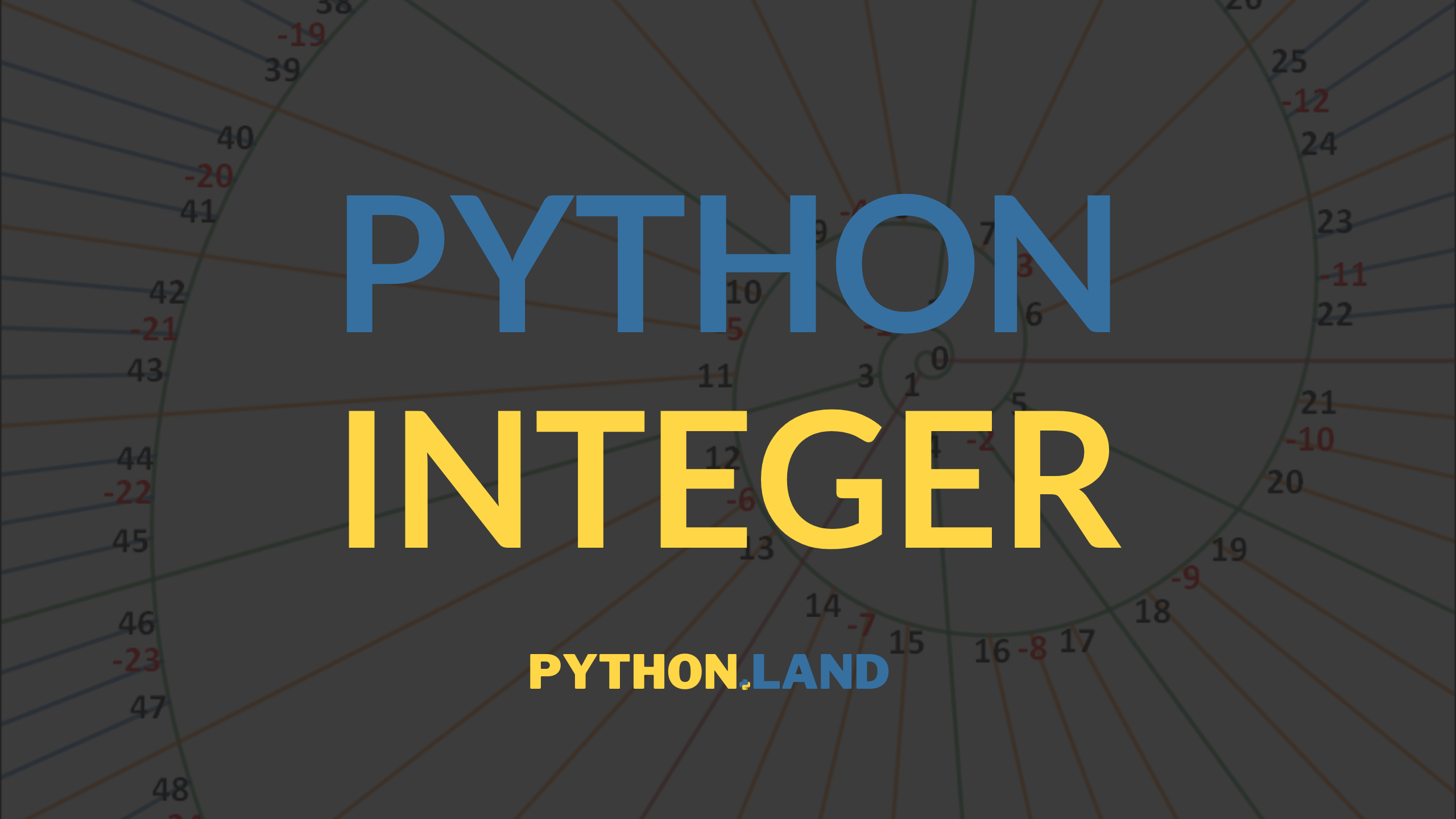The Python integer is a non-fractional number, like 1, 2, 45, -1, -2, and -100. It’s one of the three types of numbers Python supports natively, the others being floating-point numbers and complex numbers.
Table of Contents
Max size of a Python integer
Unlike many other programming languages, integers in Python 3 can have large values. They are unbounded, meaning there is no limit to their size. For example:
>>> num = 98762345098709872345000
>>> num + 1
98762345098709872345001Code language: Python (python)Of course, there is a limit since your computer does not have unlimited memory. However, for all practical purposes, you don’t have to worry about it.
Integer types
Unlike Python 2 and many other languages, Python 3 has only one integer type. This is part of Python’s aspiration to be a clean, easy-to-learn language. It’s one less thing we have to worry about. For more details, see PEP-0237.
Converting from and to an integer
String to integer
To convert a string to an integer in Python, use the int() function:
>>> int('100')
100Code language: Python (python)Integer to string
To convert an integer to a string in Python, use the str() function:
>>> str(200)
'200'Code language: Python (python)Float to integer
To convert a float to an integer, use the int() function:
>>> int(2.3)
2Code language: Python (python)Python random integer
Many use cases require a random integer. For this, you need to import the module random. Be warned that this offers pseudo-randomness, which is not suitable for cryptography.
Let’s get a random number:
>>> import random
>>> random.randint(1,10)Code language: Python (python)The above instruction returns a pseudo-random number from 1 to 10 inclusive, which means including 1 and 10. For full details of the random module, visit the Python documentation.
Is it a Python integer?
We can use the type() function to check if a value is an integer. It will return int for integers. Here’s a simple example of how to use this in an if-statement:
>>> type(2)
int
>>> if isinstance(2, int):
... print('An integer')
...
An integerCode language: Python (python)Don’t use if type(2) == int.
Using isinstance() is almost always the better, cleaner way and covers more use cases, like subclasses.




